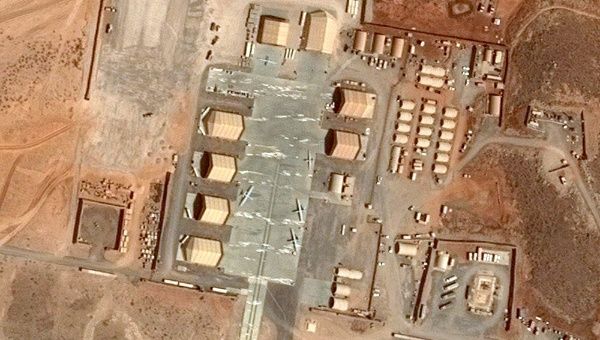Date: Thu, 22 Oct 2015 15:24:06 +0200

A Google Earth image of the Chabelly U.S. drone base outside of Djibouti City.
Published 22 October 2015
Leaked cables and Google Earth have revealed a secret drone base in a remote Djibouti airstrip, essential for U.S. military presence in Africa.
The newest budding star of the U.S.'s accelerating military presence in Africa is a drone base in Djibouti, according to an investigation by The Intercept, which added an Africa chapter to its Drone Paper leaks on Wednesday.
The whistleblower website provided insight into a secret unit called Task Force 48-4, whose operations are still largely unknown, but which seems to be principally engaged in counterterrorism in the Horn of Africa, especially against the al-Shabaab in Somalia. The unit is laid out in a hub-and-spoke design, with U.S. base Camp Lemmonier, in the Djibouti capital, at its center, and the growing Chabelly, on an airstrip 10 kilometers away.
Chabelly is not on the list of overseas bases and the Pentagon refuses to acknowledge its presence in public, but Google Earth images and various cables allowed The Intercept to conclude that the base is active and of rising importance to the U.S. army.
Established in 2013 as a temporary facility to support Camp Lemmonier, Chabelly now likely serves "intelligence, surveillance, and reconnaissance activities and counterterrorism strikes in Somalia and Yemen, as well as aiding the Saudi-led air campaign in the latter country," wrote The Intercept Wednesday.
The base provides a landing and taking off point for U.S. drones headed to Yemen, southwest Saudi Arabia, much of Somalia, parts of Ethiopia and southern Egypt. It also serves as an airstrip for French and Japanese military aircraft and civilian planes. Last year, the Pentagon signed a lease on the land until 2044 at a cost of US$70 million per year.
The Air Force Civil Engineer Almanac boasted in 2013 that Lemmonier and Chabelly were essential in "providing operations anonymity from the International Airport and improving host-nation relations.”
To Djiboutians, though, U.S. presence has been far from invisible. A Washington Post investigation in April found that Lemmonier drones crashed multiple times, inciting safety concerns from the Djibouti government and defiance from air traffic controllers, who have ignored requests from U.S. pilots.
The full extent of U.S. presence in Africa is still unknown, but investigations have estimated that between 5,000 and 8,000 U.S. forces were on the ground as of 2014 — with another 300 deployed to Cameroon last Wednesday — and at least 14 drone bases are spread out across the continent. The Intercept also counted 674 military operations in Africa, “from drone strikes to counterinsurgency instruction, intelligence gathering to marksmanship training” in 2014.